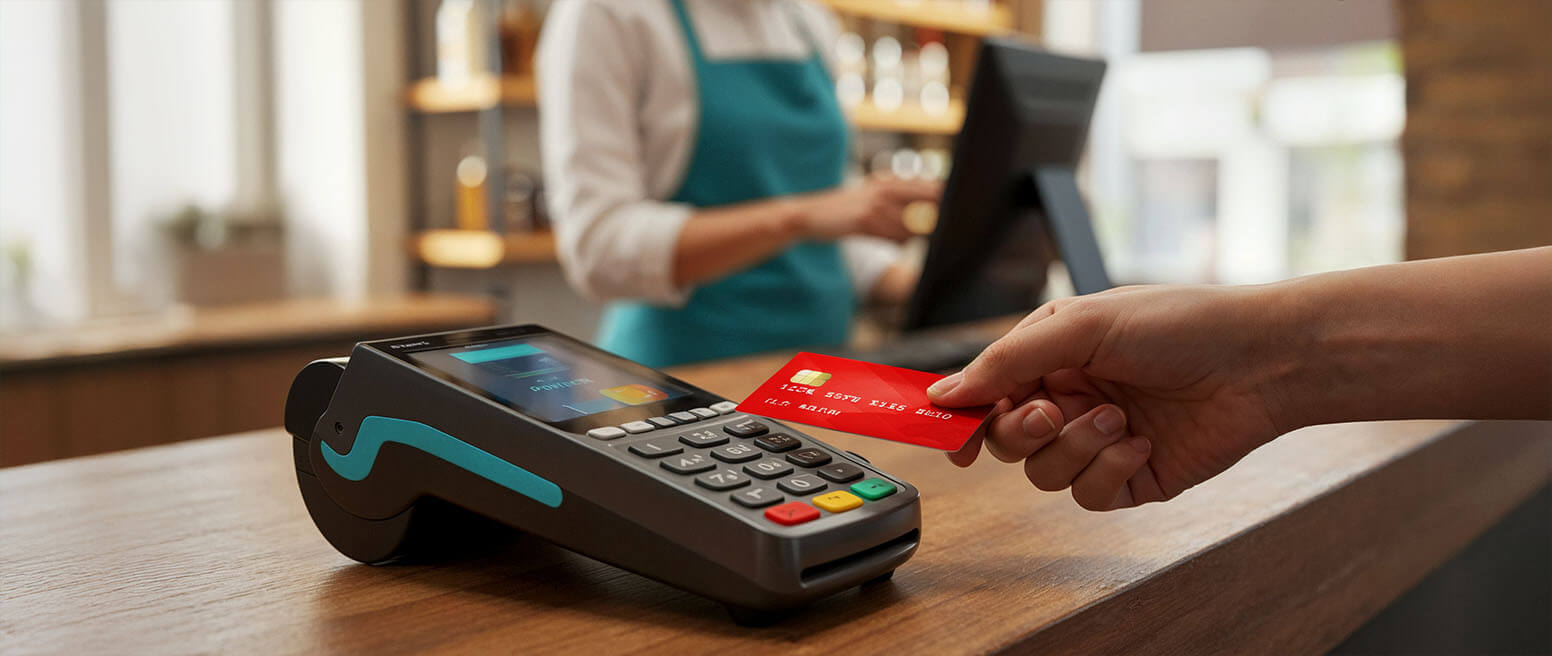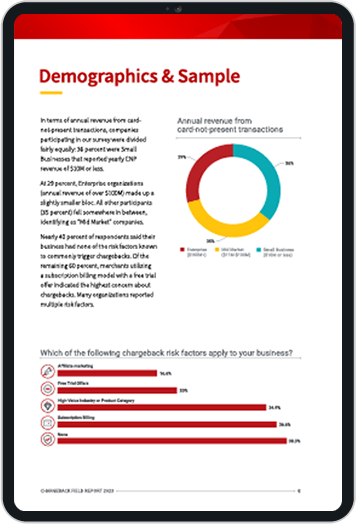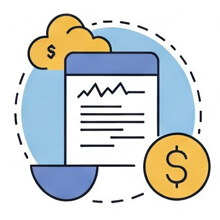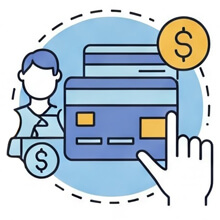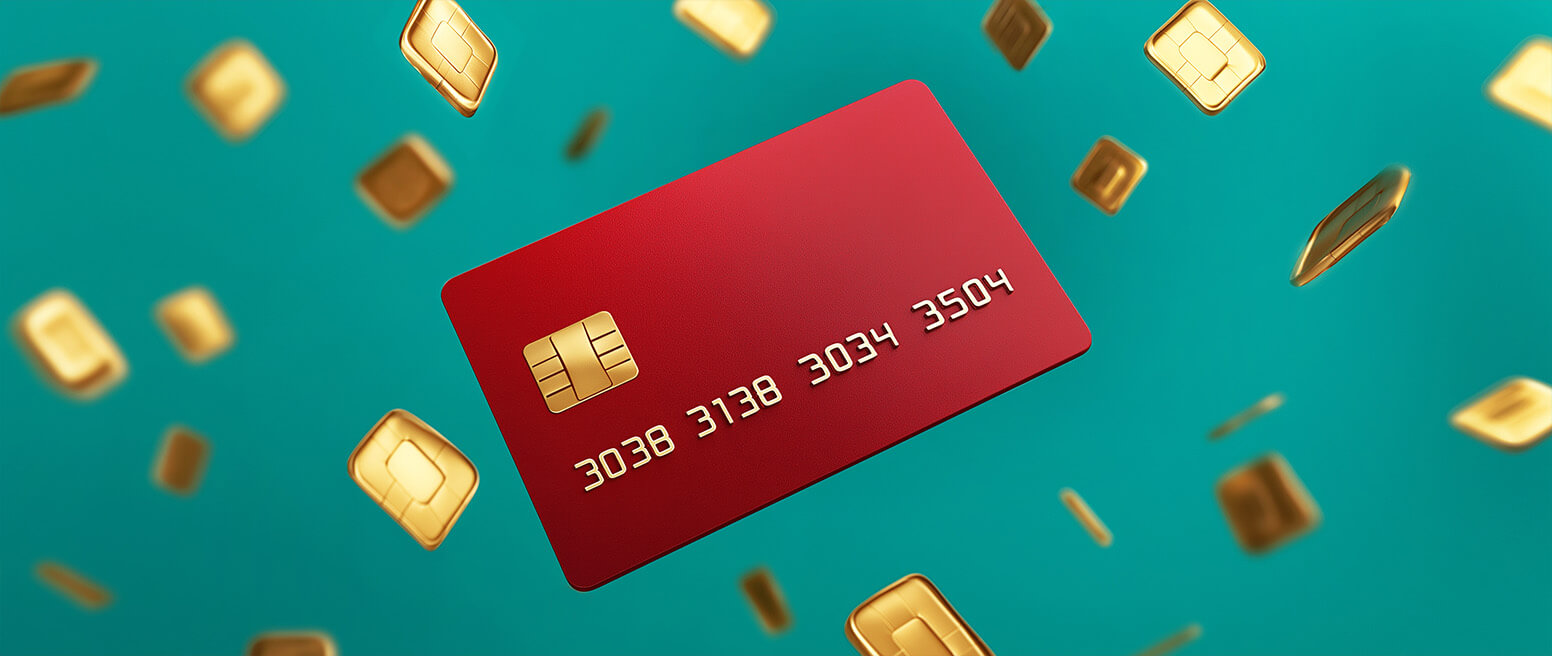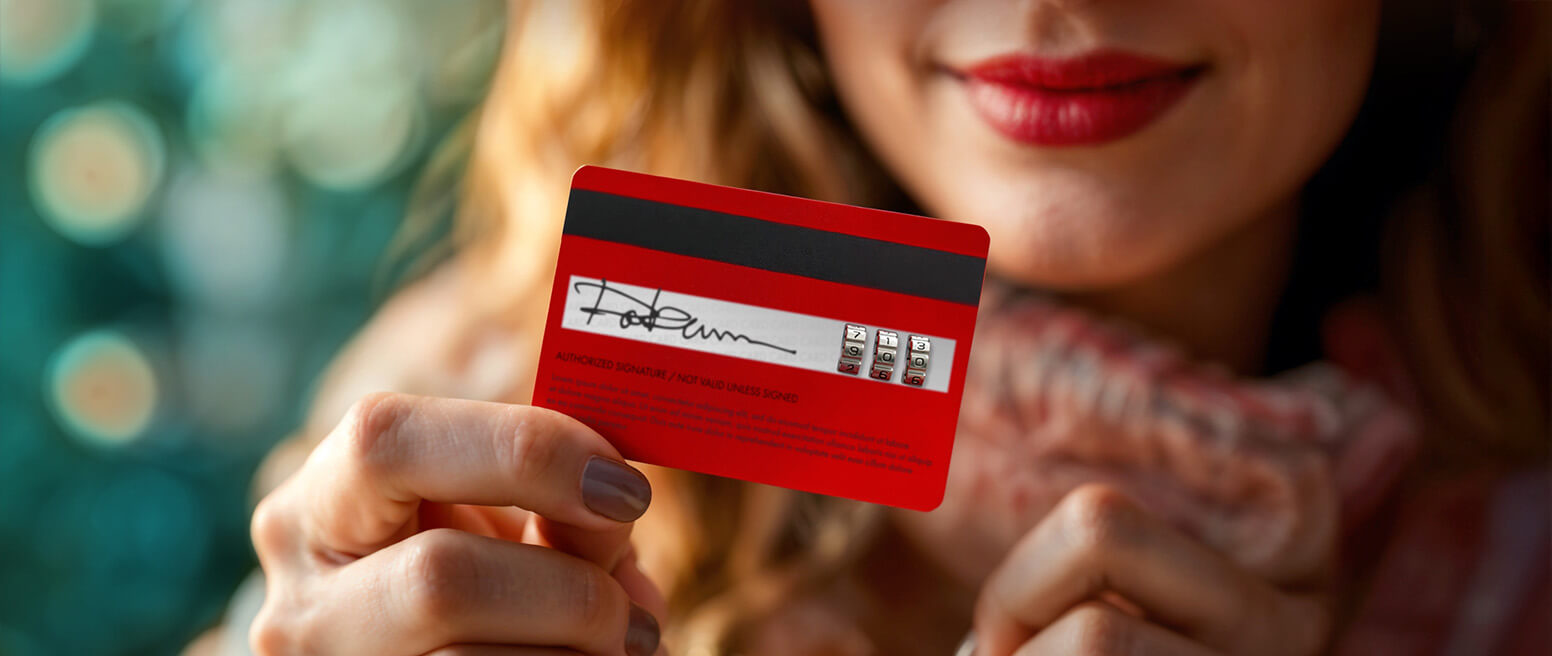How to Get More Out of Your Point-of-Sale System
The point of sale, or POS, used to be the place in your store where customers completed their sales transaction. That was before the age of eCommerce, though.
Recent data shows that 63% of the transactions that merchants process are digital card-not-present purchases. Many modern sales are mobile, too, meaning the POS could be anywhere from a restaurant table to a craft show, or even second-tier seats at an NFL game.
Point-of-sale systems have adapted and thrived under this new normal, though. In this post we look at what the modern POS looks like, how it can help you, and what you need to think about before getting one yourself.
Recommended reading
- What is EMV Bypass Cloning? Are Chip Cards Still Secure?
- Dispute Apple Pay Transaction: How Does The Process Work?
- Terminal ID Number (TID): What is it? What Does it Do?
- What is EMV Technology? Definition, Uses, Examples, & More
- Visa Installments: How it Works, Benefits, & Implementation
- dCVV2: How do Cards With Dynamic CVV Codes Work?
What is a Point of Sale?
- Point of Sale
The point of sale (or “POS”) is the location at which a retail transaction is completed. A point-of-sale system is the combined hardware and software used to process the sale.
[noun]/point • əv • sāl/
The point of sale is where purchasing and payment transactions are finalized and processed. From the late 1800s through the advent of card readers in the 1980s, the point of sale typically looked like a cash register with physical buttons. Since then, POS systems have grown increasingly complex, digital, and technologically sophisticated.

Today, in fact, “point of sale” refers not only to the place where transactions happen, but the overall process and necessary equipment as well. It can even incorporate information from other systems, such as CRMs or accounting software. The end result is a solution where multiple tasks are combined into a single cohesive process that is faster, more secure, and more accurate.
Components of a POS System
Point-of-sale systems are made up of two components: hardware and software.
Hardware is the physical equipment (cash drawer, card reader, etc.), which is mostly operated by you or your staff. Depending on your needs, you may require some or all of these:
- Register
- Barcode scanner
- Credit card readers
- View/touch screens
- Receipt printers
- Keyboard
- Cash drawer
- Monitors
With your hardware in place, you now need specialized software to go with it. POS software can manage billing and payments operations, from collecting customer data to generating receipts. Most systems also have back-end functions, which we’ll look at a little later.
Obviously, your point-of-sale machine and program will need to play nicely together. That’s why many vendors provide hardware and software in the same POS package.
How a Point of Sale Works
Now that we have all the pieces in place, let’s look at what your POS is doing during a transaction. We’ll start with the front-end operation — the part the customer sees — and compare how that stage of the process works online versus in a brick-and-mortar store.
How a Card-Present POS Works
- 1. Cashier or scans product barcodes or selects items on the POS screen;
- 2. Software applies taxes, discounts, and calculates the final amount;
- 3. Customer chooses how to pay (card, cash, digital wallet, etc.);
- 4. Payment hardware (terminal) reads data from magnetic stripe, chip, or contactless (NFC);
- 5. Card data is encrypted and sent to the payment processor via the POS system;
- 6. POS system receives approval or decline response and displays the result;
- 7. Receipt printed or sent digitally; inventory updated automatically.
How a Card-Not-Present POS Works
- 1. Cart total calculated by software embedded via a payment gateway or API;
- 2. Software applies taxes, discounts, shipping costs, and calculates the final amount;
- 3. Customer inputs card number, expiration, CVV, and billing and shipping info;
- 4. Built-in scripts check for errors, then encrypt payment data;
- 5. POS software routes the encrypted info to a gateway for processing;
- 6. Transaction response received and displayed on the checkout page in real-time;
- 7. System confirms the sale, triggers inventory update, and sends a receipt.
If properly synced, your point-of-sale program can:
- Track, record, and update inventory data
- Prompt you when re-ordering inventory is required
- Generate records and reports on revenue data and cashflow
- Share financial data with accounting software
- Track transaction details from sales, payments, returns, etc.
- Collect customer data such as buying patterns or earned loyalty points
- Track key metrics for business performance
All this can make your transaction process smoother and more accurate. You’ll have easier access to more data, know what’s happening in your warehouses, and more effectively target customers.
How Much Does a POS System Cost?
The cost of a POS system will depend on the hardware and software requirements for your business. A free system using equipment you already own can be had nearly free; a full-blown system can cost upwards of $2,000 initially, in addition to monthly fees.
So how much is all this going to cost? You probably won’t be surprised when I say “It all depends.”
Both the startup and the ongoing costs of your point-of-sale are based on your requirements, the kind of system you choose, your industry, and other variables.
With certain providers, your monthly charge to access POS software could be zero. In most cases, though, you’re probably looking at $40 - $100 a month, just for access. Some vendors completely skip the monthly subscription, and simply charge a one-time fee when you sign on.
Remember: If you’re accepting credit cards, you’ll also be paying monthly processing fees, which are separate from your POS costs.
Your big initial expense, though, is going to be the hardware. As we mentioned earlier, there are multiple physical components in a POS system, and they all come with a price tag. Depending on what you need, that price tag can be all over the map. For example:
| Item | Low End | High End |
| Cash Register | $100 | >$1,500 |
| Cash Drawer | <$50 | $1,000 |
| Barcode Scanner | <$25 | $600 |
| POS Terminal | <$50 | $1,800 |
| Credit Card Reader | $0 | $300 |
| Receipt Printer | $30 | $600 |
| Self-Service Kiosk | $700 | $4,400 |
Agnostic platforms can be a great time- and money-saver.
Whether you’re talking about a POS or a chargeback management solution.
Request a Demo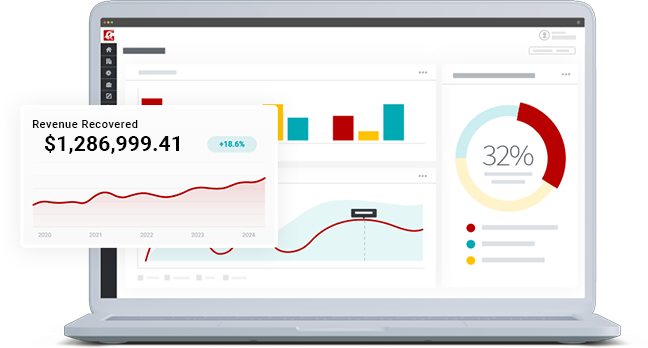
Again, these are ranges, but remember, you’ll need to multiply totals by how many point-of-sale stations you’ll need. That can get pretty pricey.
The good news is that hardware isn’t always an upfront cost. A few vendors offer financing that can be rolled into your monthly payment.
Many popular POS providers have their own branded hardware, which may or may not work with other software platforms. On the other hand, some companies offer agnostic software that works with anything. With so many options, it can be hard to estimate cost.
What Does a POS System Help You Do?
Emerging Trends in POS Technology
We’ve come a long way from crank-operated cash registers to today’s comprehensive point-of-sale services. But what can we expect going forward? What will impact the future of POS?
What Should I Look for in a POS System?
When you’re comparing POS software options, your biggest concern should be how it fits with your industry, your business, and your needs. A medical office POS, for example, should be able to sync with appointment software.
Beyond that, it’s mostly a matter of comparison shopping. Here are a few questions to consider when evaluating POS platforms:
- What size is your business? Can the POS handle multiple checkout stations? Can it scale as you grow?
- What’s your transaction volume? Can the platform handle heavy traffic? What about seasonal sales?
- Where are your customers? In-store, online, or on the go? Does the POS work where your customers buy?
- How do customers pay you? Can the system accept alternate payment options like digital wallets or BNPL?
- Is it a true value? Are you getting your money’s worth, or paying for features you don’t actually need?
- Do you need an omnichannel system? Can the platform seamlessly connect with all your other sales channels?
- Is the platform secure? Are security measures such as end-to-end encryption supported?
- What support is available? Can you count on the vendor to provide help when needed (ideally, 24/7)?
How to Optimize Your POS System
A good POS system can go a long way towards making all of your transactions more effective and efficient. Want things to run even better? Put a little effort into optimizing your system for maximum results.
Run down this checklist to make sure you’re doing everything necessary to optimize your point-of-sale system:
#1 | Choose the Right POS Software
- Supports your business type (retail, restaurant, eCommerce, etc.)
- Includes essential features (inventory, analytics, CRM, etc.)
- Scalable for future growth
#2 | Use Modern, Reliable Hardware
- EMV and NFC-capable terminals
- Barcode scanners and receipt printers in good condition
- Mobile POS options for flexibility
#3 | Ensure Fast, Secure Connectivity
- Stable internet connection with backup (e.g., LTE failover)
- Secure Wi-Fi with firewall protection
#4 | Keep Software Updated
- Regularly install updates and patches
- Enable automatic security upgrades if available
#5 | Integrate with Other Systems
- Syncs with accounting, inventory, and eCommerce platforms
- Real-time data flow between systems
#6 | Enable Multiple Payment Methods
- Accept credit/debit cards, digital wallets, contactless payments
- Offer buy now, pay later (BNPL) if relevant
#7 | Implement Security Best Practices
- PCI DSS compliance
- End-to-end encryption & tokenization
- Role-based access control for staff
#8 | Train Staff Regularly
- Train on checkout flow, troubleshooting, and security
- Update procedures with system changes
#9 | Monitor & Review Analytics
- Use built-in reporting tools to track sales and performance
- Identify trends and optimize staffing/inventory accordingly
#10 | Provide a Smooth Customer Experience
- Fast checkout process
- Digital receipts and loyalty program integration
- Easy returns and refunds via POS
Can POS Systems Help Avoid Fraud?
POS systems can be used to assist fraud prevention by providing pre-transaction customer validation and extensive recordkeeping. In challenging invalid chargebacks, your POS can provide a paper trail of compelling evidence to support your case.
Your POS is the gateway between shopping and buying. You can take advantage of that fact to help avoid fraud and chargebacks.
If you’re trying to prevent fraud, one of the best things you can do through your POS is authenticate customers. Entering a PIN is usually enough for in-store validation. If we’re talking eCommerce, though, insist on a CVV code. Both numbers can help prove that the buyer has the physical payment card.
When it comes to chargebacks, a synced POS system can adjust inventory, revise accounting, and calculate refunds. Or, if you get the feeling that a claim is invalid, your POS can provide a nice paper trail of compelling evidence to support your case.
While these features can help, protecting your business from fraud and chargebacks ultimately requires a comprehensive approach. Chargebacks911® has a wealth of experience-based knowledge and expertise in developing cost-effective prevention and risk mitigation plans. Our experts can help you discover the true sources of all your chargebacks, and implement an end-to-end management strategy to retain revenue and prevent future disputes. Contact us today to learn more.
FAQs
What do we mean by point of sale?
In broad terms, the point of sale is the place where the transaction is completed. As technology has overtaken the retail sales process, POS has come to be more closely associated with
What is an example of POS?
Square, Lightspeed, and Shopify are all examples of popular POS systems. While commonly associated with online sales, all can also be used for in-person payments.
What is a POS system and how does it work?
A POS system is the hardware and software merchants use to complete customer purchase. The system registers and tallies items in the order, then collects payment from the buyer.
For credit, debit, or check purchases, the POS device captures and sends customer and transaction payment details for authorization. Once the transaction is completed, two receipts will be created, one for the customer and one for the merchant’s records
What is considered a point-of-sale transaction?
A point-of-sale transaction is the checkout process for any purchase. It is where funds are exchanged for merchandise and the sale is completed
What are the four types of POS?
There are four common types of POS systems: legacy, online, tablet/mobile, and cloud-based.


